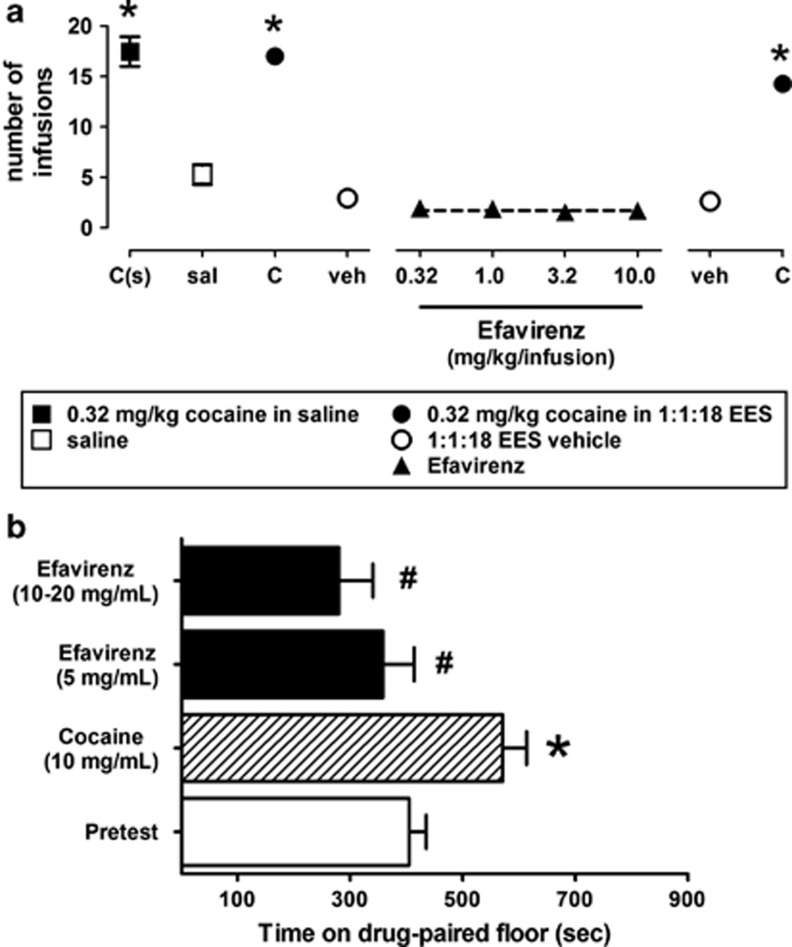Figure 4.
Efavirenz fails to exert positive reinforcing effects. (a) Efavirenz fails to maintain self-administration responding in rats that readily self-administer intravenous cocaine but not saline. The five of eight total rats that completed all phases of this study received an average of over three times the infusions of cocaine (dissolved in saline) per session (solid squares) than when saline was substituted for cocaine (open squares). When prepared in the 1 : 1 : 18 vehicle, cocaine maintained self-administration responding (dissolved in 1 : 1 : 18 vehicle) at the beginning (closed circles), middle (between the first two and the last two doses of efavirenz; data not shown), and end (solid circles, far right-hand side of graph) of the studies with efavirenz, respectively. When vehicle was substituted for cocaine, responding decreased markedly at the beginning and end of studies with efavirenz, respectively (open circles). At all doses tested, efavirenz (solid triangles) failed to maintain self-administration responding above what was obtained with vehicle (open circles). C(s), cocaine dissolved in saline (solid squares); sal, saline (open squares); C, cocaine dissolved in 1 : 1 : 18 (v/v/v) ethanol, emulphor, and 0.9% saline vehicle (solid circles); veh, 1 : 1 : 18 vehicle only (open circles); different doses of efavirenz dissolved in 1 : 1 : 18 vehicle (solid triangles). (b) Rats receiving place conditioning with cocaine (10 mg/kg intraperitoneally), but not efavirenz (5–20 mg/kg intraperitoneally), acquired a significant place preference (*P<0.05 significantly different from pretest; #P<0.05 significantly different from cocaine; one-way analysis of variance (ANOVA) with Bonferroni post hoc analysis). The data represent the mean (±SE) time spent on the drug-paired floor during the pretest for all rats tested (n=24), and during the post-test for groups of eight following acquisition under cocaine or efavirenz.

